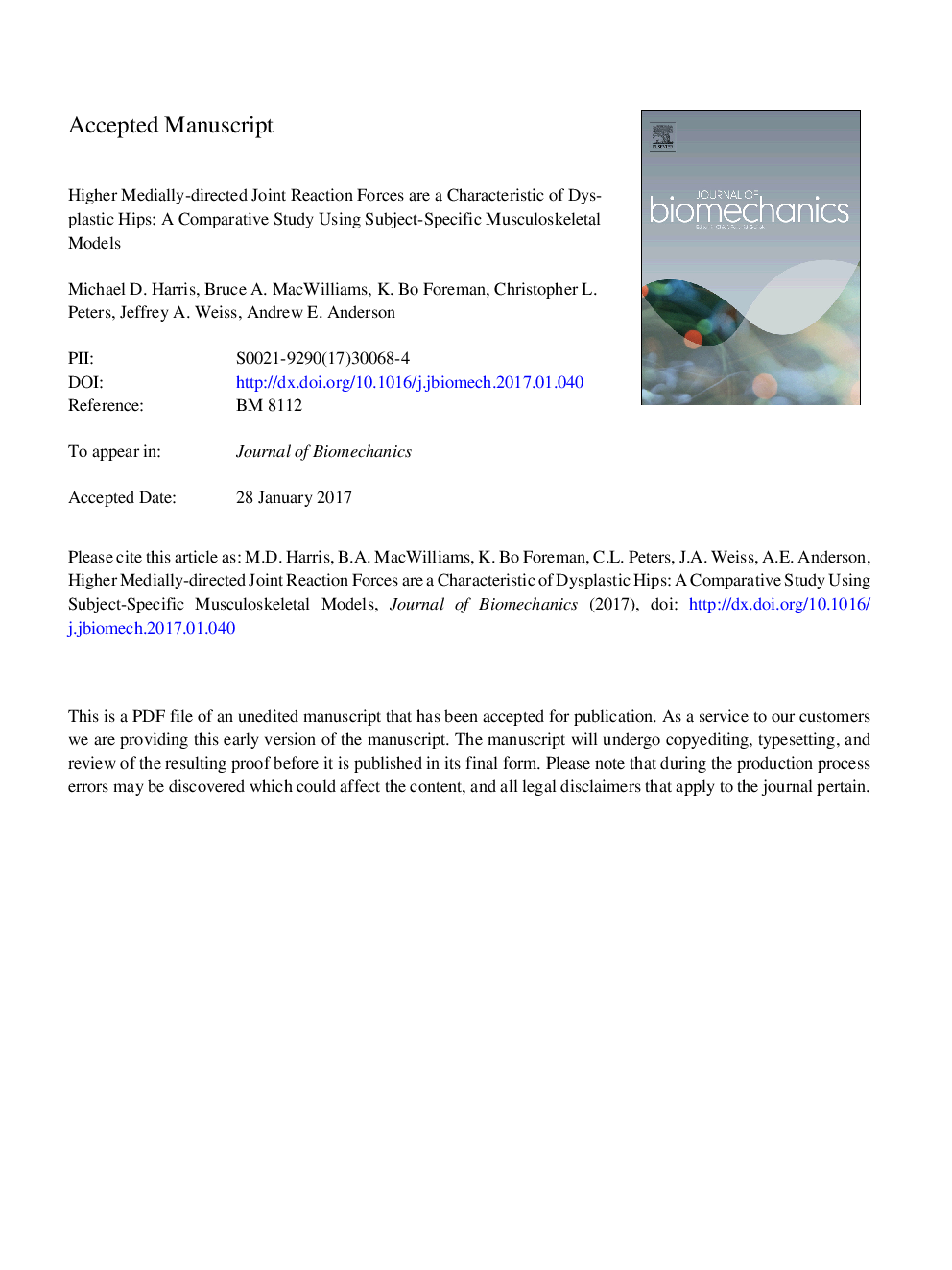| کد مقاله | کد نشریه | سال انتشار | مقاله انگلیسی | نسخه تمام متن |
|---|---|---|---|---|
| 5032172 | 1471110 | 2017 | 36 صفحه PDF | دانلود رایگان |
عنوان انگلیسی مقاله ISI
Higher medially-directed joint reaction forces are a characteristic of dysplastic hips: A comparative study using subject-specific musculoskeletal models
ترجمه فارسی عنوان
نیروهای واکنش مشترک واگیردار بالاتر از حد متوسط هستند که مشخصه های مفصل ران را دارند: یک مطالعه مقایسه ای با استفاده از مدل های اسکلتی عضلانی خاص
دانلود مقاله + سفارش ترجمه
دانلود مقاله ISI انگلیسی
رایگان برای ایرانیان
کلمات کلیدی
بیومکانیک، هیپ، دیسپلازی استابلای، راه رفتن، مدلسازی اسکلتی عضلانی
موضوعات مرتبط
مهندسی و علوم پایه
سایر رشته های مهندسی
مهندسی پزشکی
چکیده انگلیسی
Acetabular dysplasia is a known cause of hip osteoarthritis. In addition to abnormal anatomy, changes in kinematics, joint reaction forces (JRFs), and muscle forces could cause tissue damage to the cartilage and labrum, and may contribute to pain and fatigue. The objective of this study was to compare lower extremity joint angles, moments, hip JRFs and muscle forces during gait between patients with symptomatic acetabular dysplasia and healthy controls. Marker trajectories and ground reaction forces were measured in 10 dysplasia patients and 10 typically developing control subjects. A musculoskeletal model was scaled in OpenSim to each subject and subject-specific hip joint centers were determined using reconstructions from CT images. Joint kinematics and moments were calculated using inverse kinematics and inverse dynamics, respectively. Muscle forces and hip JRFs were estimated with static optimization. Inter-group differences were tested for statistical significance (p â¤Â 0.05) and large effect sizes (d â¥Â 0.8). Results demonstrated that dysplasia patients had higher medially directed JRFs. Joint angles and moments were mostly similar between the groups, but large inter-group effect sizes suggested some restriction in range of motion by patients at the hip and ankle. Higher medially-directed JRFs and inter-group differences in hip muscle forces likely stem from lateralization of the hip joint center in dysplastic patients. Joint force differences, combined with reductions in range of motion at the hip and ankle may also indicate compensatory strategies by patients with dysplasia to maintain joint stability.
ناشر
Database: Elsevier - ScienceDirect (ساینس دایرکت)
Journal: Journal of Biomechanics - Volume 54, 21 March 2017, Pages 80-87
Journal: Journal of Biomechanics - Volume 54, 21 March 2017, Pages 80-87
نویسندگان
Michael D. Harris, Bruce A. MacWilliams, K. Bo Foreman, Christopher L. Peters, Jeffrey A. Weiss, Andrew E. Anderson,
